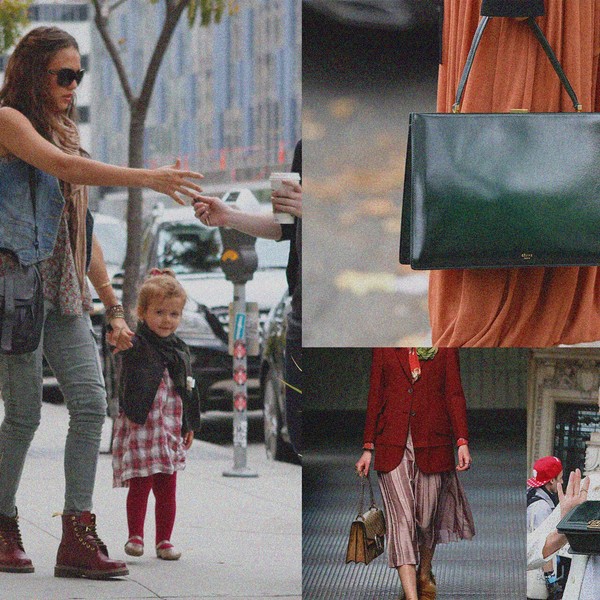Louise Roe Has A Thing for Chairs
Vintage chairs specifically. And lamps, jackets, and more.
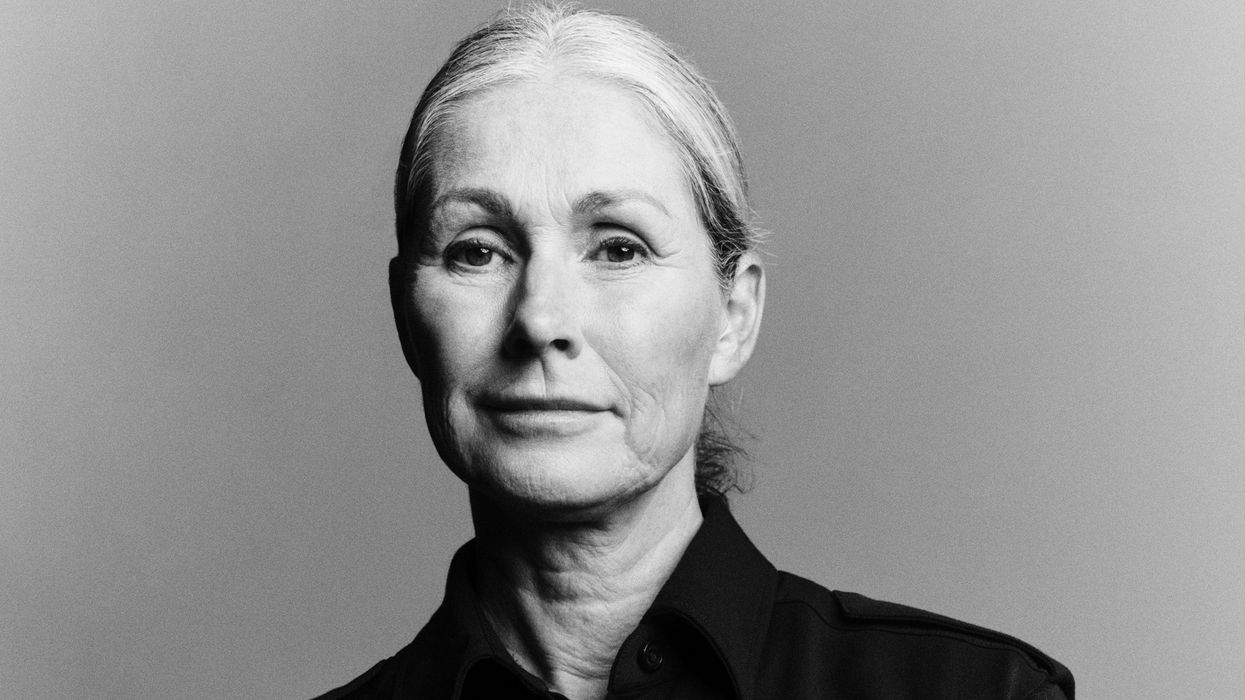
Louise Roe isn’t big on 3-D renderings. The Danish designer prefers pen and paper—old school. In fact, she’ll use whatever’s on hand, including a magazine tear sheet to sculpt a model on the fly. (Luckily there’s a great assistant behind her with a knack for sketching and 3-D renderings.) When it comes to materials, there’s no wheel reinvention either. Her brand reflects a reverence for organic materials: travertine, steel, glass, wood. The design? That’s where she gets creative, but the eccentricity lies in the most minor of details. She tweaks the proportions of classic concepts just enough to achieve a new aesthetic harmony.
And she doesn’t do it alone; Louise Roe, her eponymous company, is a family affair. Her oldest son, Emil, is the brand manager. Her husband handles logistics. Her daughter, Sophia, freelances with them. Even her younger sons help. Alongside the aforementioned assistant, a hands-on sales director, and many more devoted employees, she has turned a product line into a lifestyle brand complete with a gallery, concept store, expansive product offering, and more. Ahead, she shares the story behind the brand, her feelings about the connotation of “Danish design,” and where she finds inspiration. (She’s got a thing for unique architecture—surprise, surprise.)
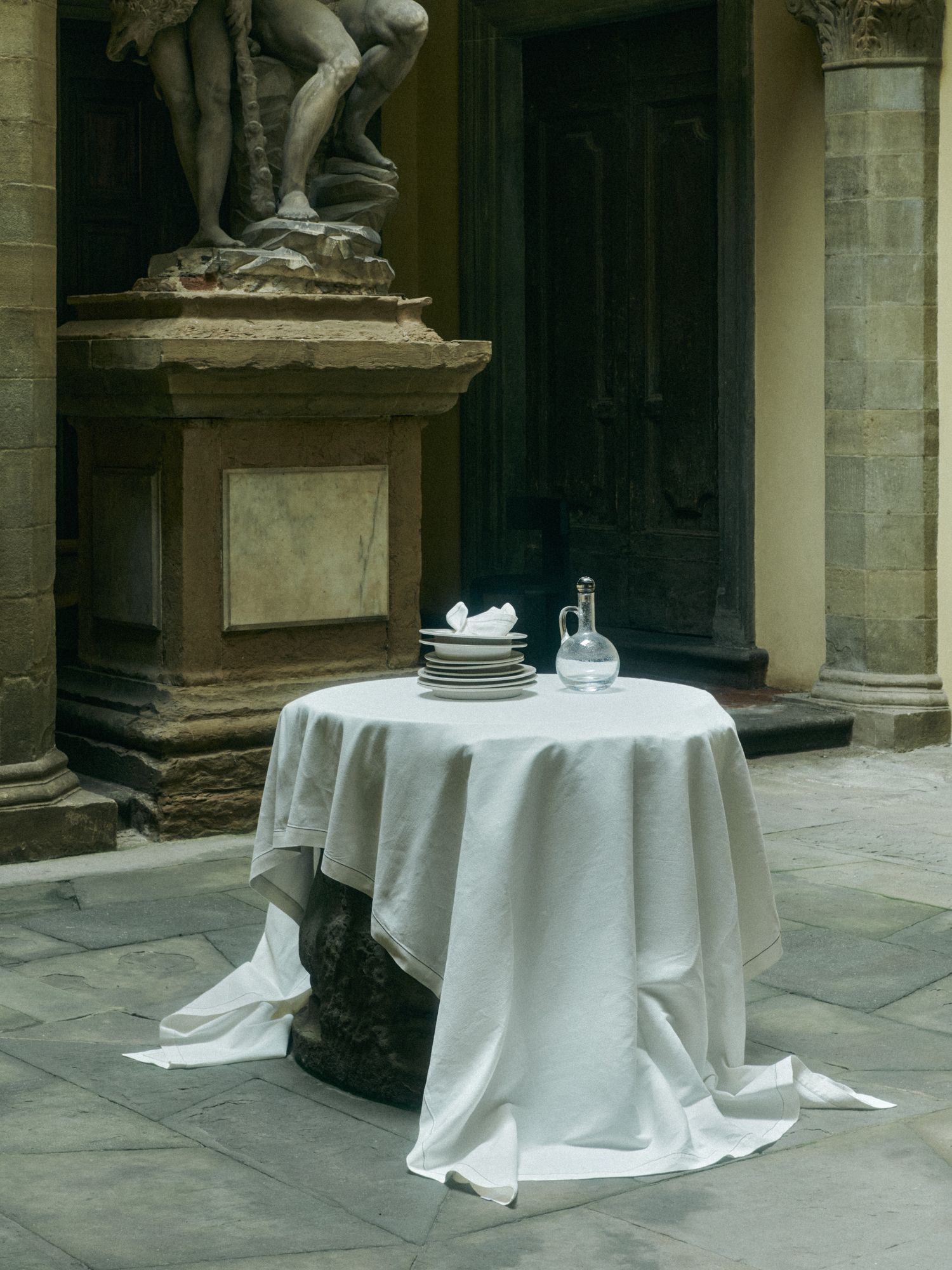

Coveteur: I'd love to hear, to kick it off, the onus behind your first collection. When you were figuring out what it would look like and how to kick off your brand, what did you want from what you were producing?
Louise Roe: “When I was in design school studying fashion, I was used to doing mood boards. You cut out what you like from magazines and make a little visual board of how you would like to create your company. It was also very difficult for me to find a name for it. But then I spoke with a graphic designer who helped me with the logo. She said, ‘You have such a beautiful name. Why don’t you call it that?’ The letters looked nice together. This was about what I wanted to create, so it made sense instead of finding a fancy name.
I think this mood board is obviously about attraction. And I learned in school that when you do a fashion collection and you look at it hanging there on a clothing rack, you need it to be a little bit diverse, but at the same time aligned so you can easily see who made this and what it is about. I learned about mixing materials while still having this color tone [in sync]. It’s like you are a chef, you need to balance ingredients for the taste.
I started the company alone in 2010. I went to my first local Danish fair to find buyers, and I brought a friend. I even brought my mom to help. I knew some buyers from my previous work, so they came to see my booth and I spoke about what it's all about. Then it has grown organically. I think after one and a half, two years, I got one employee, then I got two employees, and we went to fairs to find all the buyers, went to a Stockholm furniture fair, we went to some in Paris. And then we got to know some of the bigger ones, Selfridges from London. And we have grown very organically.”
One of my favorite questions to ask creatives: What was on that initial mood board?
LR: “A lot of fashion was on it. I do get inspired by fashion. Now when I look at the runway, I look at the figures, the shapes—big shoulders, a tiny waist. I also do that when I look at objects in my collection. I look at how the shapes and figures make a balance. If you have an object, it should have enough power to stand alone on a window sill or on a table or wherever it's placed.”

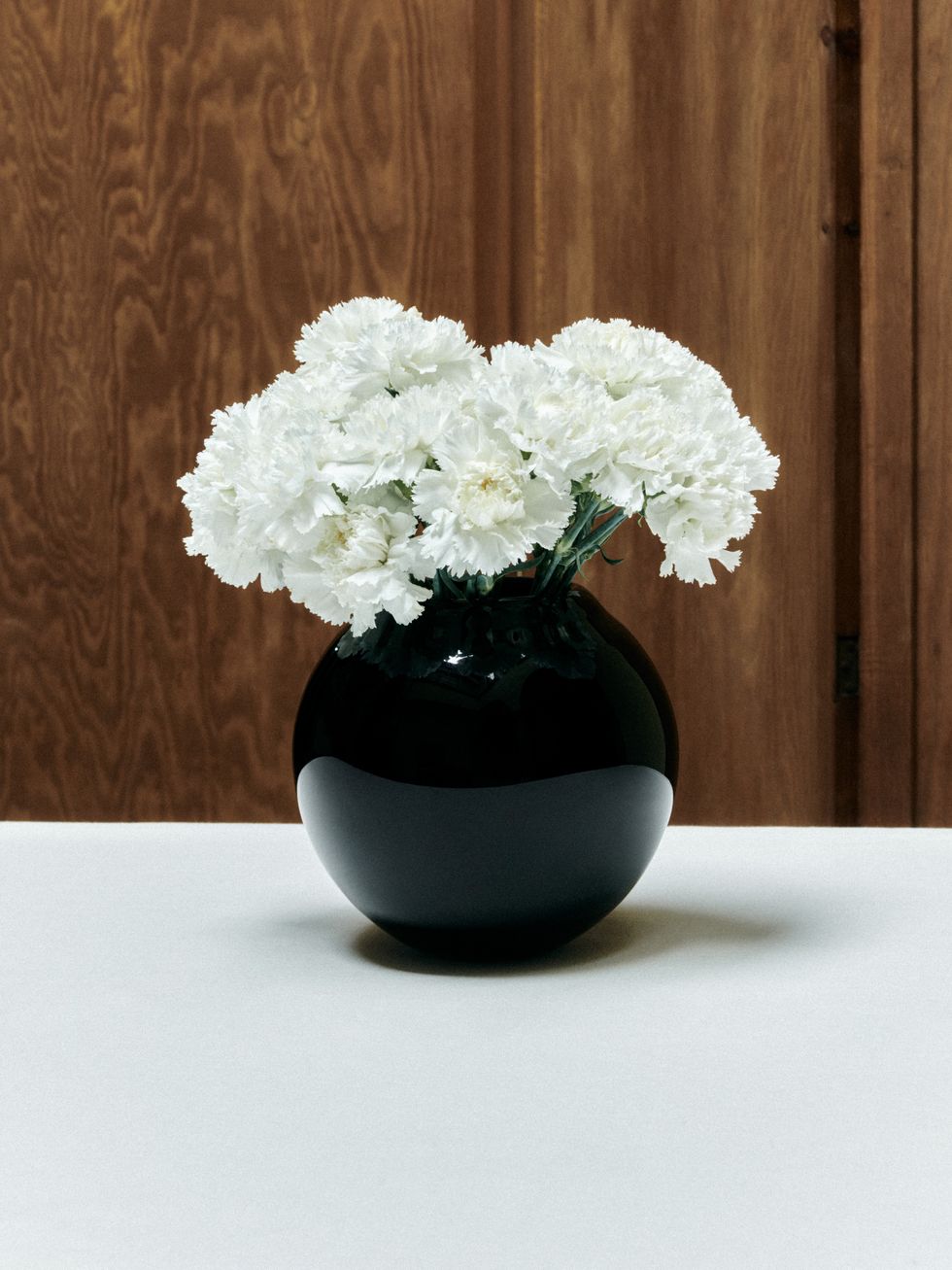
Which designers do you like to look at?
LR: “I look at architecture and buildings when I am traveling. Small, tiny details. When I go to Paris, I love the Haussmann buildings. He decided that all buildings in Paris should be beige. I like to look at both the historical and romantic perspectives of buildings. I like to see how new architects are thinking. I do like looking into Carlo Scarpa, because he used a lot of concrete, which is not really my fancy, but I like the way he thinks geometrically. His work is very simple, but it creates an atmosphere. I really like that. When I look into fashion, it's a little bit weird because I don't really have a fashion brand that I fancy because it's a little bit more diverse. I'm always quite critical when I look at fashion, because I often think of how it's not well-suited or it's not well-made. When I buy pants, I hate when the pockets are not big enough and they don't hold your phone or whatever. Why don't they just use a little bit more fabric, and then it'll be perfect? And I think that's also my aim, the reason I wanted to do this, because I think [about function].”
Tell me about process. I read that you sketch everything yourself.
LR: “Yes, I sketch everything myself. I learned to do drawings by hand in school, so I haven't done the big computer thing. That's why I have a good assistant with me. She knows how to draw all the renderings and the 3D stuff, so I work very closely with her. Also, I'm good at looking at measurements, the proportions of an object. I can always tell what 30 centimeters tall looks like. It's the same as when you cook. ‘This is enough salt, or this is enough chili.’ When I cook, I do the same. I never follow a recipe. I just use my senses.
I also visit the factories. Most of our production is in Portugal. We also have an old factory doing the mouth-blown glass in Poland. I really appreciate the work they do. When I meet people here in the shop and they say, ‘Oh, that's quite expensive,’ I say, ‘No, it's not expensive.’ If you see the people who have done this using so much power, so much manual labor on this, it should be double. I wish I was a craftswoman myself. During childhood, I did this carpenter thing in school. But at that time, all the boys were doing football and carpentry. We did the knitting and that was it. It was a little old-fashioned when I went to school.”
What about materials? It seems like it's something you think a lot about, and I've read before you really enjoy working with steel. What materials do you gravitate towards and do you feel are emblematic of your brand?
LR: “I think it's very important for me to use honest materials, the ones we understand when we see them. This is ceramic. This is stone. This is wood. It's easier for the audience to understand the design. For example, if you use steel, which is quite hard to bend. If you can challenge it a bit and do some soft shapes in this hard material, I think that's interesting.
I think that my collection might seem quite minimalistic or sculptural, but I also like to challenge the different organic materials. I refer a lot to cooking, but it's the same to have different foods to fill a plate. To make a room, you need different materials that support each other. If you have the glass, which is more shiny, and then you have some wood, which is more matte, the tactile materials need to talk to each other, you could say.”
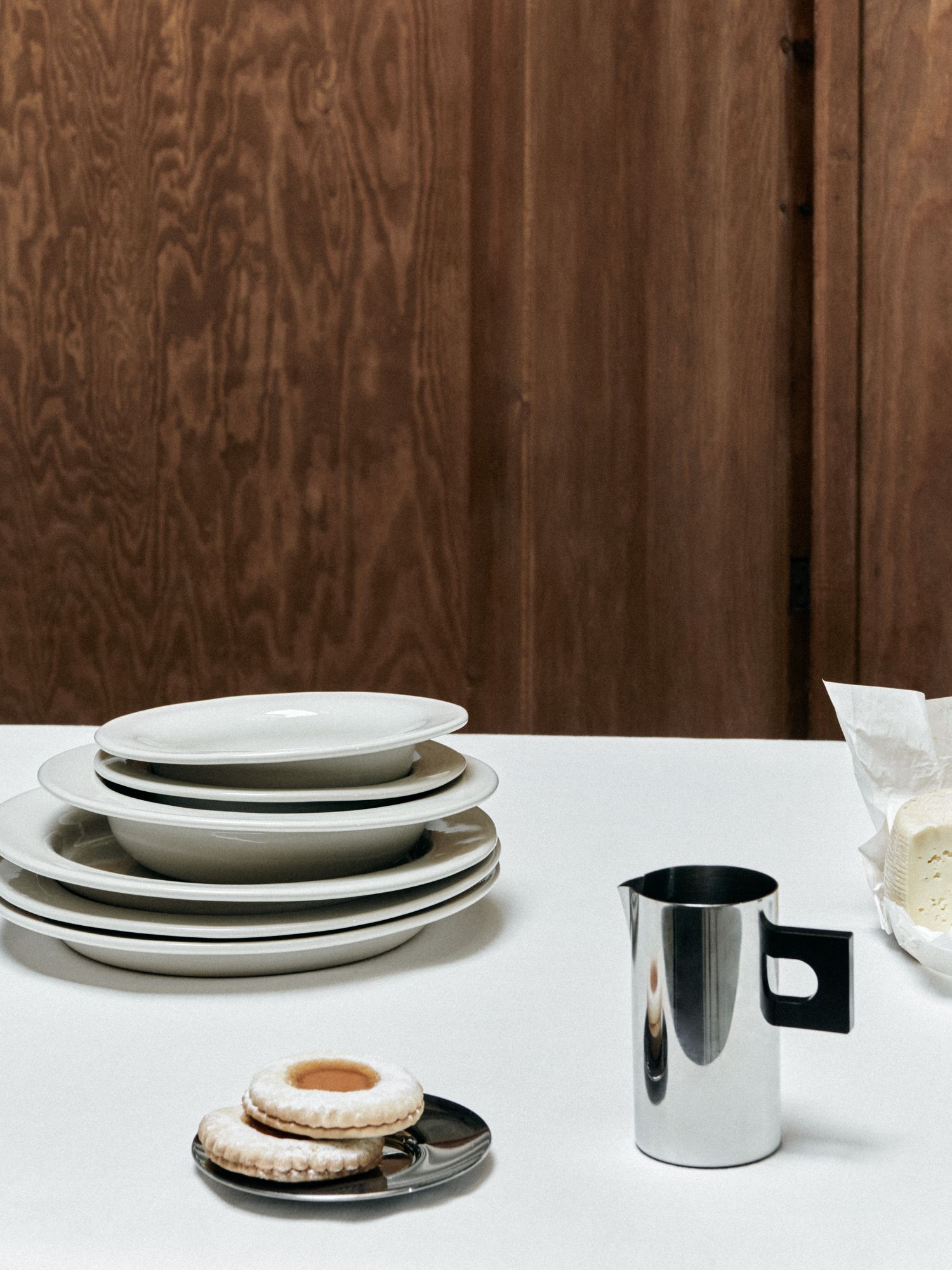

If you're gravitating towards organic materials, it's going to give you a pretty neutral color palette. Do you like to keep it that way?
LR: “It's not that I don't like colors. I do. I love the blue sky, I like the green trees, but I often relate it to something natural. I'm not the woman that wears a red dress, but it's not that I don't like it. It doesn't feel natural for me. I don't like when something is artificial.”
I was just going to ask about the rest of your life, like how you dress, how you decorate your home. Does that correspond to what your collection looks like? Do you think they all have the same energy?
LR: “You could say so. When I dress, I like something classic. My hair is also always very classic. Now, I am in my gray period. It doesn't mean that everything is dull. I like classic with a twist. I know it's a cliche to say, but I don't like it to be very wild. I like when things are beautiful for your eyes, like when you listen to very nice music for your ears and you taste something really nice for your mouth. It's about using your senses in all matters.”
I'm sure you have Louise Roe in your home. What other things do you pair your designs with when you make a complete space?
LR: “I'm not good at hanging things on my walls, so my home is very minimalistic. I only have a few things on the walls. I have some vintage chairs. I like to go to a site called Pamono, it's from Germany, and they have a lot of really nice vintage stuff. Even here in the gallery, we have different chairs. I have a thing about chairs like someone might have for shoes or handbags. I have too many chairs in my home. I have a thing for chairs and I have a thing for table lamps. It doesn’t have to be a certain brand. I just love it if I can tell that the quality is really good. Even if I buy a jacket, I like to go to a vintage store and find a really old Celine jacket or something like that, where I can see the quality.”
I feel like the concept Danish design has almost taken on the same energy as French girl style, where it's been marketed to the masses. But what is Danish design to you? Do you feel like your work is an example of Danish design or are you massaging that?
LR: “I don't think I am a true Dane. I find a lot of inspiration actually from your city [New York]. I think you have great interiors. When I look at Instagram, I see a lot of profiles where I feel inspired. I think from a Dane's perspective, I skew a little bit more global in my design. We are more than just one thing. People enter our gallery and say, ‘What is this about?’ I think because the Danes are quite simple. Maybe I'm a little bit more daring than the normal Danes.
I don't under-design anything just to be commercial. Of course, I ask myself if there's enough room in the market for another chair or another vase. There are plenty of chairs, but I try to be different. If all the chairs look like this, then we need to do something that's more personal, so you can remember that, ‘Oh, that's a Louise Roe chair.’ Maybe 10 years ago, there was a lot of fuss about Nordic design. But then suddenly, I think it became too much about this coziness, oak wood everywhere and hazel colors.”

